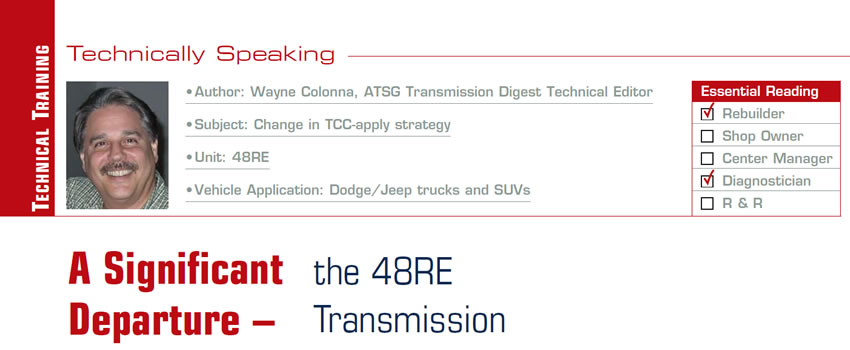
Technically Speaking
- Subject: Change in TCC-apply strategy
- Unit: 48RE
- Vehicle Application: Dodge/Jeep trucks and SUVs
- Essential Reading: Rebuilder, Diagnostician
- Author: Wayne Colonna, ATSG, Transmission Digest Technical Editor
For many of you who have been working on the Dodge/Jeep RE-series transmissions, you are more than likely all too familiar with an engine-stall condition when reverse is selected. This problem usually reveals itself when the transmission is hot. The usual cause is a defective pump. From time to time a restricted cooler would be the culprit, but in most instances it has been the pump.
There have been many times when offering up the pump as an explanation to the problem on our technical hotline would be met with quite a bit of resistance, as the pump always “looked” perfect. “It’s in pristine condition,” the technician would say. And he or she was right; it did “look” perfect.
It wasn’t until Bob Warnke from Sonnax introduced the use of a product by Sensor Products called Pressurex® Film that the reason for the problem became obvious. A piece of this white flat film would be cut out and fitted between the pump halves. The pump cover would then be tightened to the body. The compression would crush microcapsules of paint within the film. The color intensity would change depending on the pressure applied to it; the higher the pressure the brighter the red, as more of these microcapsules were being crushed. It was a great way to see how such a perfect-looking pump did not have a good, flat mating surface.
Depending on how far out of flat the surfaces were and where they were out of flat, there would be a variety of complaints. Recurring diagnostic trouble code P1740 or P0740 was one possibility, or a stall in reverse when hot was usually the other. If the vehicle was stalling in reverse AND forward, this too would be a defective pump or a restricted cooler. But, it could also be a defective torque converter and/or a stuck TCC switch valve in the valve body.
To this very day, regardless of whether it is a 42, 44, 46, 47 or 48RE transmission, we still have the same problem. However, we now have a new issue with the 48RE that is causing some confusion.
When the 48RE was designed to replace the 46/47RE-style transmission for Dodge’s heavy-duty line of trucks beginning in 2003, changes were made to the pump stator, the torque converter and the torque capacity of the clutch drums. In addition to these changes, very significant changes were made to the valve body, particularly with the hydraulics related to converter-clutch control.
The change allowed for TCC engagement to be possible in the manual 2 and manual 1 positions for better pulling capacity at lower engine speed.

To accomplish this, changes were made in the channel plate and spacer plates, along with the elimination of the No. 2 checkball (figures 1-3). These changes were made so that the TCC solenoid is now fed with forward-clutch pressure (Figure 4) rather than 2nd-gear oil from the 1-2 shift valve (Figure 5).
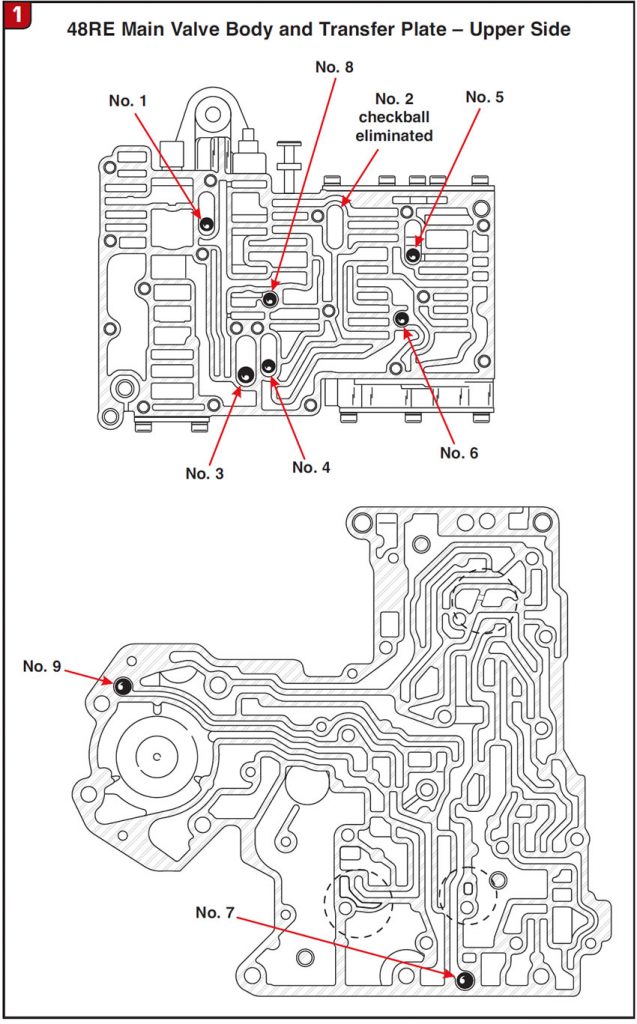
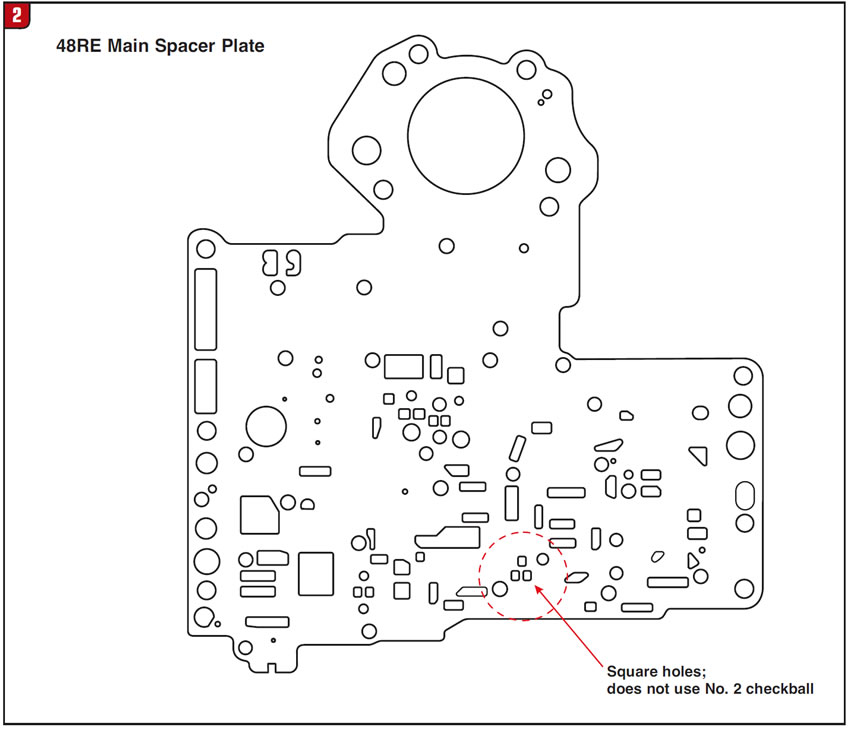

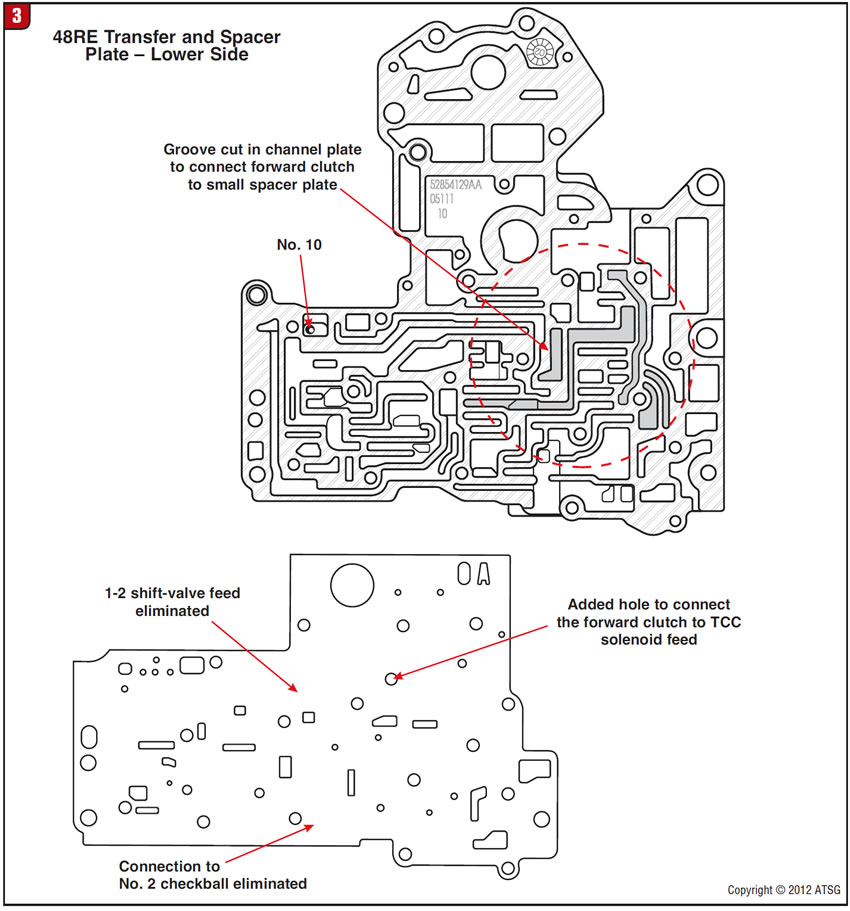
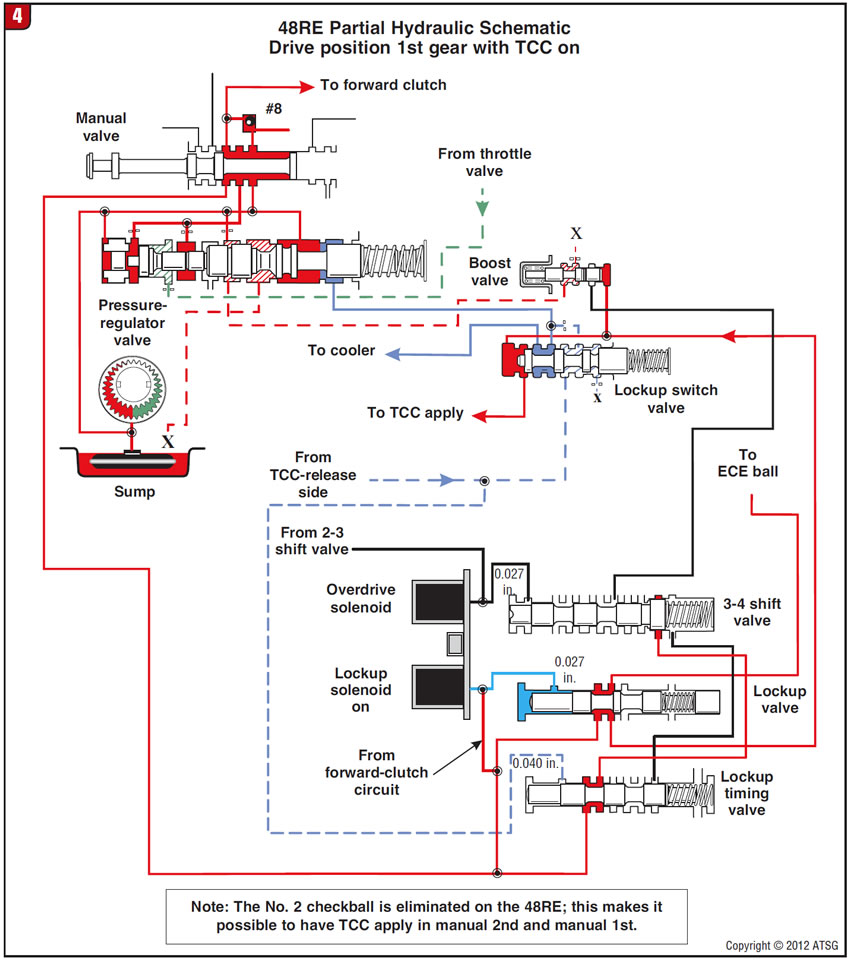

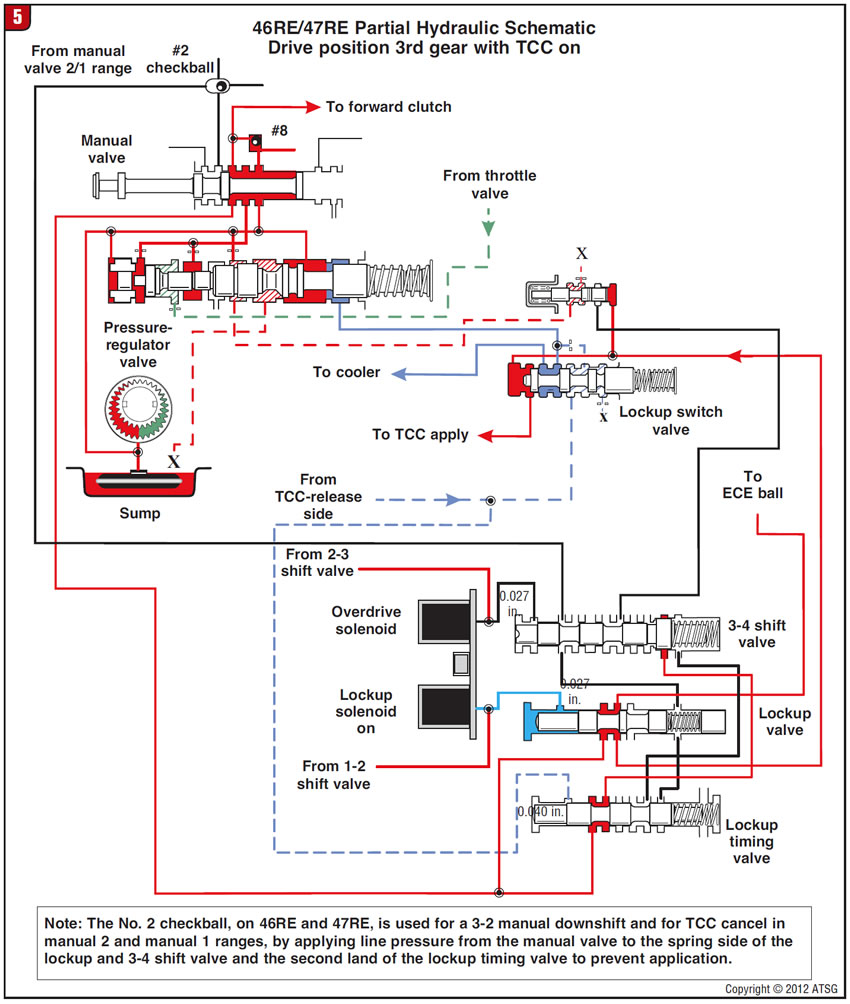
This configuration will now allow for a computer strategy to apply the converter as early as first gear but only under specific conditions. For example, the vehicle must be moving under load in the manual 1 or 2 position.

Should the TCC solenoid become restricted, as soon as Drive is selected it can cause the converter clutch to fully apply, stalling the vehicle. The confusion is to think that a pump problem or a restricted cooler is causing the stall. Never before would a TCC solenoid do such a thing with these vehicles. When they were stuck closed, TCC apply would occur on top of the 1-2 shift, as it is fed with second-gear oil. And this is still how it is with any RE transmission that is NOT a 48RE. So confusion occurs as to the cause, and a pump is replaced in an attempt to resolve the issue.
In some instances the confusion deepens when the pump is bad in a 48RE, causing it to stall in reverse, AND the TCC solenoid is bad, causing it to stall in forward. So now the pump is replaced, resolving the stall in reverse, but the engine still stalls in drive.
Knowing this significant departure in the TCC-apply strategy of the 48RE when compared with the other RE-series transmissions eliminates the confusion. The big key here is that if it does not stall in reverse but stalls in drive, you know you have a defective TCC solenoid mechanically and the repair can be made quickly.
On some occasions the TCC solenoid fails in such a way that it drags the clutch as soon as the transmission is placed into drive. This causes the computer to pick up on an unusual engine-load condition. In response, it decides to increase engine speed. So now you have a vehicle that suddenly picks up engine speed soon after drive is selected. With a partially applied converter clutch in first gear being driven by a powerful diesel engine you suddenly find yourself standing on the brakes saying, “Whoa, Nelly!” – another sure sign you need a new TCC solenoid!














